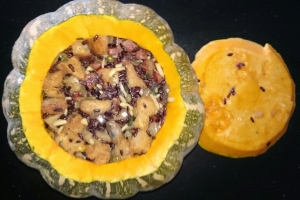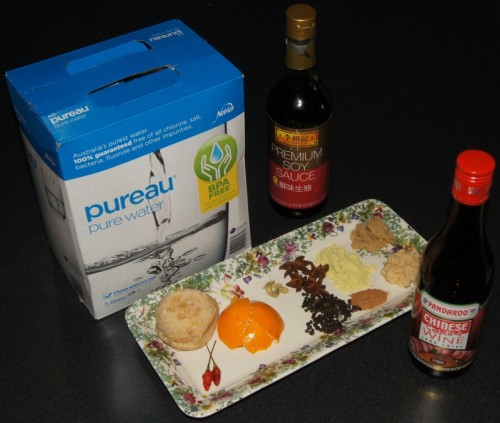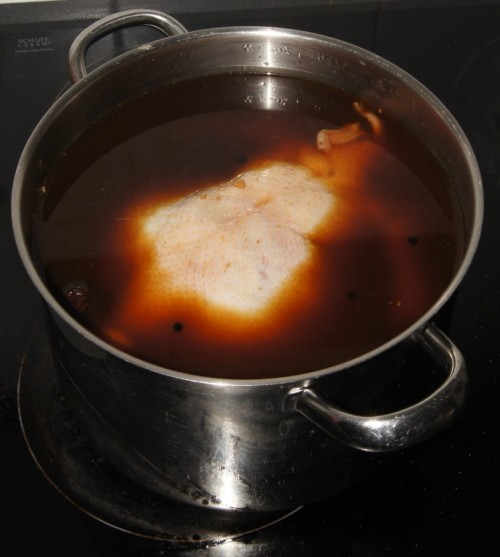Who doesn’t enjoy Fried Chicken! If there’s a more popular comfort food in the Western World, I surely haven’t heard of it. Chicken lends itself to so many flavours, that the options for a good Fried Chicken can be endless.
Please feel free to change any of the quantities of herbs and spices I have included in my recipe, and even substitute them out if you want. I’ll give some of the more popular options I enjoy, and you can come up with your own secret recipe of herbs and spices.
Even assign yourself the rank of General if you want. A General outranks a Colonel, and your chicken will outrank the Colonels offerings.
One of the great things about Fried Chicken is that it’s cheap. Regardless of your budget, most people can afford to make it, and make it well. That being said, if you want the best results, you really should buy a Free Range whole bird, and segment it yourself. Sure, you might have just doubled the price of the meal, but the results are that much better.
If it helps, think of the additional price as a bit of an Animal Welfare Tax. Yes, you’ve paid a premium for your poultry, but the knowledge that the chicken had a happy existence prior to being humanely dispatched is something we should all be a bit more attuned to. In addition, you’ll have a few wing tips and cages to use for that Chicken Stock you’re going to make one day…but that’s a different blog.
If segmenting a chicken is something you haven’t done, fear not. There are thousands of DIY videos online to help you. It’s not that difficult, and once you’ve done it a couple of times, you’ll be able to impress all of your friends and do it in front of them in just a minute or so.
Start with 2 whole chickens, and segment them into wings (minus the tips), legs, thighs, and breasts. Cut the breasts in half to make 2 chunks. In all, you should have 10 pieces per bird, or 20 pieces overall. If there are only 2 of you eating, do 2 chickens. It’s not much harder to do than 1, and the leftover chicken later is divine. If you are watching your caloric intake, remove the skin…but i wouldn’t.
You’ll need:
2 Chickens
Herbs and Spices (see below)
Buttermilk*
2 eggs – optional step
1 cup chicken stock – optional step
Plain Flour, or Wholemeal Flour (which is what I use)
1/2 Cup LSA* – optional
Heavy pot, cast iron is best
Enough cooking oil (peanut or canola) to cover half up the chicken pieces.
*About the Buttermilk. If you can’t get it, or don’t have it, add 3 Tbsp white vinegar to 3 cups milk. Stir and let sit for 10 minutes before using. Another option, which works great for this recipe, is to add 2 Tbsp white vinegar and 1/2 cup white wine to 2 1/2 cups milk.
*About the LSA. It’s a mix of ground Linseed, Sunflower seeds, and Almonds. Do not use if there is a chance someone with a nut allergy will eat the chicken. It will impart a great flavour, with it’s nuttiness, and is jam packed with nutrients. Do a search online for LSA and be amazed. You just might want to add it to everything.
Using a spice grinder (aka coffee grinder), blitz the following until a fine powder is achieved:
1 Tbsp Salt (coarse cooking salt, or kosher salt)
2 tsp Peppercorns (whole)
1 tsp dried Sage
1 tsp dried Rosemary
2tsp dried Chilli’s (red pepper flakes are OK)
1 Tbsp Paprika (smoked is best)
Options:
Instead of the Rosemary, add 1/2 tsp Cumin seeds, 1 tsp dried Oregano (and add 1/2 tsp cayenne for that Jamaican Jerk punch)
Instead of the Sage and Rosemary, add Coriander seeds and Chinese 5 spice
In a bowl, or large baking dish, place the chicken and add the ground spice mix tossing to mix. Let sit about 10 minutes then add about 3 cups buttermilk (or buttermilk mix). Toss together and rest in a fridge for at least 6 hours, preferably overnight. I usually add it all to a ziplock bag, and evacuate the air so the chicken maintains contact with the buttermilk at all times.
When ready to cook, remove chicken from the bag and place on a wire rack, above a tray to catch the drips. If you are going to double dip the chicken in flour, for an extra thick crunchy coating, add the leftover buttermilk mix to a bowl, and beat in 2 eggs and the chicken stock.
In another bowl, add the flour, LSA, and the following:
2 tsp Garlic powder (not garlic salt, and not granules)
2 tsp Onion powder (not granules)
1 Tbsp salt (normal kitchen salt is fine)
1 tsp ground Pepper
1 Tbsp Paprika (smoked is best)
1 tsp ground Cayenne pepper (more or less to taste)
I would not add herbs here at all as they will be on the outside of the food and will burn in the oil. Burnt herbs are not good herbs.
Single dip method:
Dredge the chicken in the flour, making sure to get good coverage. Shake off the excess and place on another wire rack.
Double dip method:
Dredge the chicken in the flour, making sure to get good coverage, then dip in the buttermilk mix. Repeat the dredge, and shake off the excess before placing on a wire rack.
Buried method (thanks to Steve Murray, from beautiful Bellingham in Washington State):
After the 6 hour soak in the marinade, dredge the chicken pieces in the flour, and then bury the pieces in the flour container overnight. To do this, you will need to double the flour recipe. On the plus side, use the remaining flour to make “Hush Puppies”, which are basically a golden fried corn meal dumpling (and a culinary institution in the deep South of the US).
Tip: Use one hand for wet work (wet chicken and buttermilk), and one for dry work (flour). This way you don’t end up with battered hands.
Place the heavy pan on a medium high heat, and heat the oil to 180 degrees Celsius (350f). The reason we don’t preheat, is because we want the chicken to sit for a bit after the dredge. You will see the flour become a batter. This is a good thing.
Carefully place the pieces in the pan, being careful not to crowd it. You want good space between the pieces, and you want the pan to remain fairly hot. To much chicken in at once will cool the oil too much, and the chicken will take too long to cook (or be undercooked) and will become greasy. Once nice and brown, turn and cook the other side.
When the pieces are cooked, place them on a wire rack, and into a warmed oven. Do not season them until just before serving.
When all pieces are cooked, sprinkle a little salt on them, and serve. Great with a home made macaroni and cheese, or a nice tossed salad. But the very best way to eat, is cooled to room temperature with a bottle of chilled white, at your local moonlight outdoor theatre or favourite picnic spot.
Oh, if you try the Chinese variety (coriander and 5 spice), serve with a 50/50 mix of hoisin and sweet chilli sauce…delicious.
Bon appetite.




















You must be logged in to post a comment.